Plastic overmolding is a complex manufacturing process that involves multiple steps of injecting two different materials into a single final, molded part. As you can imagine, adding additional steps and materials into the injection molding process comes with some unique complications and challenges.
Addressing these challenges requires an injection molding company with ample experience in providing overmolding services for many different types of products. Enter AIM Processing, backed by more than 30 years in producing quality molded plastics for some of the most challenging industries and markets. From optimum material selection/compatibility to design for manufacturability, we collaborate closely with our customers to establish the most efficient overmolding process that delivers the highest quality results.
Issues to Look out for in Overmolding: From Product Design to Material Selection
Overmolding Material Compatibility and Optimization
As with any custom injection molding project, proper material selection is crucial. You have the usual considerations of cost, quality, and performance characteristics – all of which are essentially multiplied by two since we’re layering two different plastics together.
Furthermore, with overmolding, compatibility between the base substrate and overmolded plastic is essential to achieve proper material adhesion and bonding. Differences in melting temperatures, shrinkage rates, and chemical compositions between materials can lead to adhesion failures, warping, or dimensional inaccuracies. That’s why we carefully choose the ideal overmolding materials for every unique project.
Product Design Complexity
Overmolding intricate or complex geometries requires careful consideration of all molding steps: the initial mold and tooling design, the material flow during molding, and the part demolding process. Like with other complex injection molded components, we ensure the design accommodates adequate draft angles, uniform wall thickness, and proper gating to guarantee reliable production and a quality finished product.
Minimizing Part Distortion
Just like with conventional injection molding, overmolded parts can be ruined by excessive heat and pressure. These hot spots and pressure points tend to distort the finished part and/or compromise its structural integrity. Non-uniform cooling can also cause part distortion, leading to dimensional inaccuracies in minor cases or full-on warpage in more extreme cases.
Essentially, that all means we have to carefully design both the mold and part to facilitate proper heat distribution and cooling. We also have to carefully monitor and control the cooling rates, which can be even more complicated when overmolding multiple materials. One more reason to choose a contract manufacturer with extensive overmolding experience.
Cost Considerations
Overmolding typically requires higher tooling costs compared to traditional plastic molding processes due to the complexity of molds, most often involving a second mold for low-to-mid volume overmolding. Ongoing production costs can also be higher due to the complexity of the process and the use of multiple materials. To ensure the ongoing success of your project, it’s important to carefully consider the initial tooling costs with your volume requirements and potential market demand.
The Colorado Region’s Premier Plastic Overmolding Specialist
One of the Denver area’s leading plastic molders since 1993, AIM Processing provides custom overmolding services for a diverse range of parts and components. Our company is an ISO 9001:2015 registered American contract manufacturer backed by more than three decades of expertise in the overmolding process.

 SINCE 1993 MADE IN USA
SINCE 1993 MADE IN USA 


